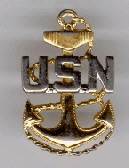Peleliu Island (Beliliou) Peleliu State Palau (Republic of Palau, Belau, Pelew)
Location
Peleliu Island is located in Peleliu State the center of Palau (Republic of Palau, Belau, Pelew). Also spelled Beliliou in the local language. The island encompasses five square miles in land area. To the north is Ngesebus Island and Kongauru Island and to the southwest is Angaur Island.
Prewar
Prior to World War I, Peleliu was a German colony. After World War I, the League of Nations mandated Palau to Japan administered by the Imperial Japanese Navy (IJN). During March 1922 Palau became been the headquarters of the Japanese South Seas Colonial Administration with a civilian administration. Contrary to the League of Nations mandate, the Japanese military developed Palau into a military base.
Wartime History
By September 1944, roughly 6,000 Japanese defended Peleliu. Starting in June 1944, U. S. Army Air Force (USAAF) B-24 Liberators and U. S. Navy (USN) carrier aircraft conducted bombing missions against Peleliu prior to the amphibious landings then flew close air support missions until the conclusion of the battle. Contrary to what American planners believed, Peleliu was heavily fortified.
American and Japanese missions against PeleliuJune 9, 1944 - November 29, 1944
On September 15, 1944 the U. S. Marine Corps (USMC) 1st Marine Division made an amphibious landing on the southwest corner of Peleliu. On the first day, a portion of Peleliu Airfield was captured and by D+2 was liberated and repaired for use by American aircraft. For a month, Japanese defenses on Umurbrogol Ridge (Battle of Bloody Nose Ridge) hauled the Marines advance. The two month battle became one of the bloodiest battles of the Pacific War with over 20,000 casualties. On October 13, 1944 organized Japanese resistance on the island ended, although some groups of Japanese soldiers continued to hold out for the remainder of the Pacific War and continued to conduct harassing attacks.
Orin Whitman 1st Marine Division recalls:
"The Marines called for help, [on Peleliu] on 23rd and [from Angaur] we relieved some of the Marines they were shot up bad, Major Ray Davis lost 71% of his battalion any one who survived Peleliu should have some kind of medal, It was tough there. Also went to Leyte PI but it was nothing like Peleliu. Went on to Japan and was home 28 of Feb. 1946. Went back to Peleliu in September 1999 for the 55th anniversary. The Island didn't look the same but lot of the pill boxes, bunkers, air strip, guns and gun emplacements were just as we left them, Peleliu was one hell of a place in 44, no way I can describe it."
Postwar
After the Pacific War, a small contingent of U. S. personnel remained on Peleliu Island. By early 1947, only 150 U. S. Marines were stationed on the island with 35 dependents. During the end of March 1947, a group of 33 Japanese soldiers led by Lt. Ei Yamaguchi attacked a Marine patrol with hand grenades. Luckily, none of the Americans were injured but reinforcements were called in to hunt down the holdouts. With a Japanese Admiral sent to convince the group the war was over, the holdout emerged in two groups during late April 1947 and their Yamaguchi turned over his sword and battle flag to the Americans. In 1994, he returned for the 50th anniversary commemorations. On July 1, 1947 the Marine garrison on Peleliu was disbanded with the last twenty-one Marines (20 enlisted and one officer) were transfered to Koror.
Today
Peleliu is sparsely inhabited. Even to the present day, unexploded ordnance (UXO) continues to be found and detonated. The island is rarely visited by outsiders. During 1994 on the 50th anniversary, some USMC veterans returned with family members and others interested in the battle.
White Beach / Bloody Beach
On September 15, 1944 "White Beach" was the site of the the U. S. Marine Corps 1st Marine Division (1st Mar Div) landings on Peleliu. There is a huge blockhouse inland of White Beach that has been renovated into the new Peleliu museum. During the battle, the blockhouse was heavily fortified and delayed the advance of the 1st Marines. Supporting arms failed to neutralize the position and it finally took the 14" guns of a battleship to destroy the fortification! Maj. Ray Davis then moved his CP group near the structure and the blockhouse was used as the 1st Battalion aid station.
Orange Beach
Located on the south-west corner of the island. On September 15, 1944 the USMC 5th and 7th Marines landed at this beach. Today, wreckage remains on shore.
Peleliu Airfield
Built by the Japanese, captured by American forces in September 1944.
Umurbrogol (Bloody Nose Ridge)
Umurbrogol is a massif hill feature to the northeast of Peleliu Airfield parallel to the western coast of Peleliu Island. Also known as simply Umurbrogol, Umurbrogol Mountain, Umurbrogol Mt., Umurbrogol Pocket. Nicknamed Bloody Nose Ridge by the U. S. Marines during the Battle of Peleliu.
Hill 100 (Popeメs Ridge, Walt's Ridge)
Ridge located to the north of Peleliu Airfield
TBM-1C Avenger Bureau Number 16956
Pilot Baxter crashed September 13, 1944
Japanese Memorial
Tori gate and park area
US Army 81st Infantry Memorial
Simple memorial of two stone pillars and a white cross
M4 Sherman Tank
Disabled by a mine flipped on its side
LVT(A)-1 Landing Vehicle Tracked
Abandoned on Peleliu
War Museum
A small war museum located at Klouklubed, the main village on Peleliu Island.
Bunkers and Japanese Headquarters
Japanese bunkers and headquarters building are also tucked into the jungle regrowth.
Japanese Supply Ship
This is a recently discovered shipwreck. The ship has depth charges, gas masks, helmets, forks and pots in the compartments and cargo holds.
A6M Zero
Ditched in shallow water offshore
A6M ZeroDitched upside down atop Tim's Reef
References
Honolulu Star Bulletin "Last Marines Withdrawn From Peleliu" July 17, 1947 page 7
https://pacificwrecks.com/provinces/palau_peleliu.html
